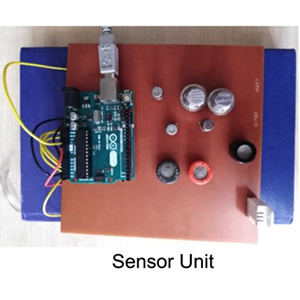E-nose: a low-cost fruit ripeness monitoring system

Published: 3 November 2022
Abstract Views: 2646
PDF: 895
HTML: 577
HTML: 577
Publisher's note
All claims expressed in this article are solely those of the authors and do not necessarily represent those of their affiliated organizations, or those of the publisher, the editors and the reviewers. Any product that may be evaluated in this article or claim that may be made by its manufacturer is not guaranteed or endorsed by the publisher.
All claims expressed in this article are solely those of the authors and do not necessarily represent those of their affiliated organizations, or those of the publisher, the editors and the reviewers. Any product that may be evaluated in this article or claim that may be made by its manufacturer is not guaranteed or endorsed by the publisher.
Similar Articles
- Fabrizio Mazzetto, Aldo Calcante, Aira Mena, Pasqualina Sacco, TEST OF GROUND-SENSING DEVICES FOR MONITORING CANOPY VIGOUR AND DOWNY MILDEW PRESENCE IN VINEYARDS: FIRST QUALITATIVE RESULTS , Journal of Agricultural Engineering: Vol. 42 No. 2 (2011)
- Floriano Buccigrossi, Angelo Caliandro, Pietro Rubino, Mario Alberto Mastro, TESTING SOME PEDO-TRANSFER FUNCTIONS (PTFS) IN APULIA REGION , Journal of Agricultural Engineering: Vol. 40 No. 1 (2009)
- Paolo Liberati, Paolo Zappavigna, Evaluation of solar energy on the roofs of livestock houses , Journal of Agricultural Engineering: Vol. 43 No. 4 (2012)
- Andrea Rosario Proto, Giuseppe Zimbalatti, Martino Negri, THE MEASUREMENT AND DISTRIBUTION OF WOOD DUST , Journal of Agricultural Engineering: Vol. 41 No. 1 (2010)
- Giuseppe Toscano, Eleonora Maldini, ANALYSIS OF THE PHYSICALAND CHEMICAL CHARACTERISTICS OF VEGETABLE OILS AS FUEL , Journal of Agricultural Engineering: Vol. 38 No. 3 (2007)
- Thais Queiroz Zorzeto Cesar, Paulo Ademar Martins Leal , Omar Carvalho Branquinho, Felipe Antonio Moura Miranda, Wireless sensor network to identify the reduction of meteorological gradients in greenhouse in subtropical conditions , Journal of Agricultural Engineering: Vol. 52 No. 1 (2021)
- Salvatore Faugno, Stefania Pindozzi, Collins Okello, Maura Sannino, Testing the application of an automatic milking system on buffalo (Bubalus bubalis) , Journal of Agricultural Engineering: Vol. 46 No. 1 (2015)
- Robinson Osorio Hernandez, Jairo Alexander Osorio Saraz, Keller Sullivan Oliveira, Ivan Dario Aristizabal, Julio Cesar Arango, Computational fluid dynamics assessment of effect of different openings configurations on the thermal environment of a facility for coffee wet processing , Journal of Agricultural Engineering: Vol. 51 No. 1 (2020)
- Andrea Petroselli, Rodolfo Piscopia, Salvatore Grimaldi, Design discharge estimation in small and ungauged basins: EBA4SUB framework sensitivity analysis , Journal of Agricultural Engineering: Vol. 51 No. 2 (2020)
- Michele Carrara, Pietro Catania, Felice Pipitone, Mariangela Vallone, Marco Salvia, ASSESSMENT OF THE PEDICEL DETACHING AND CRUSHING FORCES OF GRAPE BERRIES TO DETERMINE THE OPTIMAL MECHANICAL HARVESTING TIME , Journal of Agricultural Engineering: Vol. 38 No. 3 (2007)
<< < 41 42 43 44 45 46 47 48 > >>
You may also start an advanced similarity search for this article.

 https://doi.org/10.4081/jae.2022.1389
https://doi.org/10.4081/jae.2022.1389







